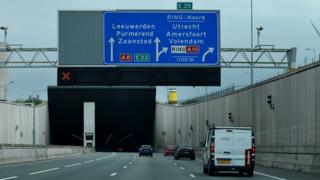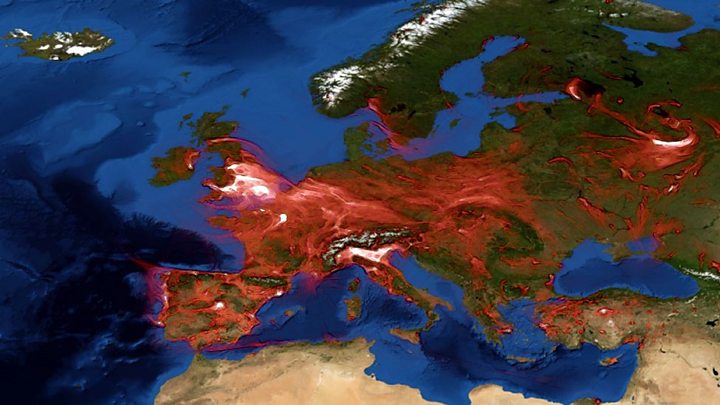Netherlands forced to slash speed limit to reduce emissions
The daytime motorway limit will be cut to 100km/h (62 mph) in a bid to tackle a pollution crisis. …

 Image copyright Getty Images
Image copyright Getty Images The daytime speed limit on Dutch roads is to be cut to 100km/h (62mph) in a bid to tackle a nitrogen oxide pollution crisis, according to cabinet sources widely quoted by Dutch media.
Prime Minister Mark Rutte said it was a “rotten measure” but necessary. The existing limit of up to 130km/h will still be permitted at night.
The new limit is set to come in next year along with several other measures.
Ministers have been grappling with ways of responding to the emissions problem.
“No-one likes this,” Mr Rutte told a news conference. “But there’s really something bigger at stake. We have to stop the Netherlands from coming to a halt and jobs being lost unnecessarily.”
Getty Images
I’m incredibly disappointed, it’s terrible. But otherwise people would have lost their jobs by Christmas. And I would not have been able to look at myself in the mirror
He said it was the deepest crisis he had ever dealt with in nine years in power and the refugee crisis in 2015-16 bore no comparison.
Why are they acting now?
The crisis is so severe that big infrastructure projects have been put on hold. A ruling in May by the top court in the Netherlands on nitrogen oxide emissions affected thousands of plans for roads, housing and airports.
The Council of State said Dutch rules for granting building and farming permits breached EU law protecting nature from emissions such as ammonia and nitrous oxide.
The government wants to build 75,000 homes next year, so for the past week the cabinet has tried to find a solution to cutting the pollutants. Among the options discussed by ministers was a ban on vehicles on Sunday.

Media playback is unsupported on your device
Drivers will be allowed to revert to the current maximum between 19:00 and 06:00. Only 8%-10% of cars are thought to travel between those times.
Even with the lower 100km/h speed limit there could still be emissions problems in areas such as the congested Randstad central-west belt, home to the biggest Dutch cities of Amsterdam, Rotterdam, The Hague and Utrecht.
Bringing the motorway speed limit down to 100km/h will make the Netherlands the lowest in Europe, on a par with Cyprus which has far fewer motorways.
Maximum road speed limits (km/h)
Netherlands’ proposed new speed
The most common maximum speed limit in Europe is 130km/h while in the UK it is 70mph (112 km/h).
Although the Dutch measure is being seen as temporary, Mr Rutte said he would not make any promises on limiting it. While ministers want to introduce the reduced speed limit soon, it will have to be co-ordinated and road signs changed.
Why farmers will be affected too
Last month, farmers reacted angrily to claims that intensive farming was partly to blame for the emissions problem, after a report called for drastic measures to reduce livestock as well as action on the roads.

Media playback is unsupported on your device
A tractor protest caused the worst-ever morning rush hour in the country as farmers argued they were being victimised.
Another of the measures announced on Wednesday is a plan to change livestock feed to include an enzyme that reduces nitrogen oxide emissions from cows.
Farmers are also set to be affected by plans next month to cut emissions in protected areas of the country that are part of a European network known as Natura 2000.
A project to bring the Formula 1 Grand Prix back to Zandvoort next year was criticised by some environmentalists, who raised concerns about emissions from the race as well as from work to extend the circuit.


